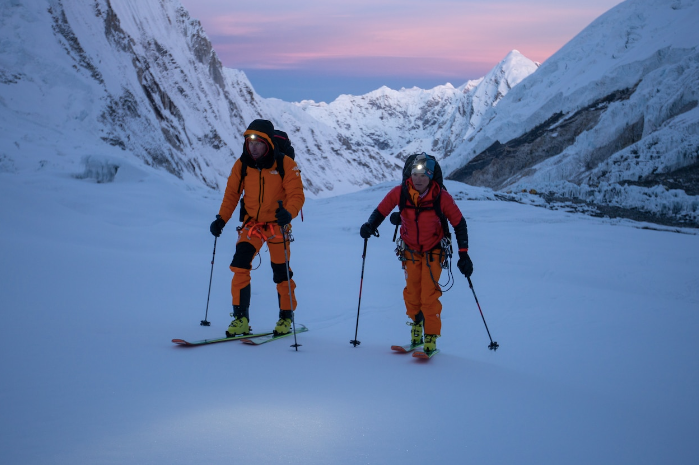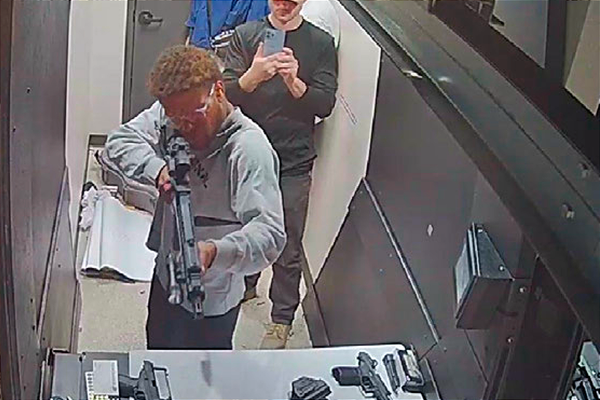The secret microscope that sparked a scientific revolution

On September 7, 1674, Antonie Van Leeuwenhoek sent a letter to London’s Royal Society detailing an astonishing discovery. While he was examining algae from a nearby lake through his homemade microscope, a creature “with green and very glittering little scales,” which he estimated to be a thousand times smaller than a mite, had darted across his vision. Two years later, he followed up with another report so extraordinary that microbiologists today refer to it simply as “Letter 18”: Van Leeuwenhoek had looked everywhere and found what he called animalcules (Latin for “little animals”) in everything. This monumental discovery was not made by one of the 17th century’s great scientific minds such as Galileo or Isaac Newton, but by a secretive, self-taught Dutchman, who did it by handcrafting a lens 10 times more powerful than anything built before it.
Ski mountaineer Hilaree Nelson disappears while descending Manaslu
On Monday, American ski mountaineer Hilaree Nelson and her partner Jim Morrison reached the summit of 26,781-foot Manaslu, the eighth-highest mountain in the world. Soon after the 49-year-old explorer began her descent on skis, she disappeared. On Wednesday, searchers recovered her body. Nelson, a National Geographic Explorer, had a distinctive sense of wanderlust that propelled her through more than 40 expeditions to 16 countries. Along the way, she explored some of the tallest mountains on the planet, often carrying her skis along with her for the ride down. In 2012, she became the first woman to summit two 8,000-meter peaks, Mount Everest and Lhotse, in a single 24-hour push. Six years later, Nelson returned to Lhotse to become the first to ski from its summit.

The hunt for hidden signs of consciousness in unreachable patients
A man sits in what resembles a motorized dentist’s chair, his head cocked backwards, a blue surgical mask covering his mouth and nose. A white mesh cap dotted with 60 electrodes, each connected to a two-meter-long cable, is held in place by a strap beneath his chin. Hovering above him, an infrared array positioned on an articulating arm bounces signals off sensors attached to the man’s temples to produce a moving, MRI-constructed overlay of his brain on a nearby monitor. Three heavy cables, each about as thick as a garden hose, coil out from behind the device to a quarter-million-dollar machine controlling the output. On the other side of the room, Marcello Massimini, a blue-eyed, curly-haired neuroscientist watches as complicated blue squiggles representing brain waves fill the screen in close to real time — the faint sign of consciousness.

How two monks smuggled silkworm eggs into the Byzantine Empire
In the mid-6th century AD, two monks, with the support of the Byzantine emperor Justinian I, acquired and smuggled silkworm eggs into the Byzantine Empire, which led to the establishment of an indigenous silk industry. The acquisition of silk worms from China allowed the Byzantines to have a monopoly of silk in Europe. Since adult silkworms are rather fragile and have to be constantly kept at a specific temperature, the monks used their contacts in Sogdiana to smuggle out silkworm eggs or very young larvae instead, which they hid within their bamboo canes. It is estimated that the entire expedition lasted two years.

Lessons from a professional password cracker
Julia Angwin of The Markup writes: "This summer I heard some news about passwords that blew my mind. Jeremi Gosney, a renowned password cracker, gave a talk at a hacker conference and declared that entropy was overrated. The most important feature of a strong password these days, he said, was uniqueness—having a different password for each account. Gosney is password royalty. He helped develop the open source password recovery software Hashcat, and he is the former CEO of the password-cracking firm Terahash. He helps run the DEF CON Password Village and the PasswordsCon track at Security BSides Las Vegas. So I called him up and asked him to explain the new thinking in the password world.

How scientists use dark fiber underneath the ocean to track baleen whales
For marine biologists, baleen whales are one of the indicators of the overall health of the oceans. Tracking them, however, can be difficult and expensive. So in this paper, entitled "Eavesdropping at the speed of light," several whale-tracking experts show how they used dark fiber-optic cables to create a massive, distributed acoustic sensing system. By repurposing this global infrastructure of under-sea telecommunications, they were able to record vocalizing baleen whales along a 120-kilometre cable with a sensing point every four metres, from a protected fjord area out to the open ocean. This allowed them to not only hear the whales, but to estimate the 3D position of a vocalizing whale.

A spectacular rock found only in Australia, known as a boulder opal
Originating in Australia, Boulder Opal is composed of two parts: the host rock, which is usually an ironstone or sandstone, and a precious opal. It’s formed when the silica compound has water in it, penetrates the rock, and deposits opal in the cracks https://t.co/jNNgMXKhq5 pic.twitter.com/zzIAqgyoAN
— Massimo (@Rainmaker1973) September 28, 2022



